Bleaching refers to the process of lightening the stains or colours inside enamel or dentine by using chemical agents.
To whiten teeth and regain the normal colour of the teeth.
Vital tooth.
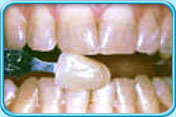 Before bleaching
Before bleaching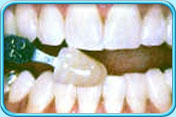 After bleaching
After bleachingNon-vital tooth treated by root canal therapy.
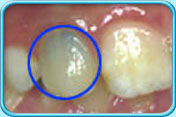 Before bleaching
Before bleaching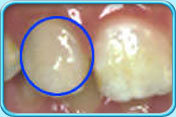 After bleaching
After bleachingBleaching agents are used to oxidize the colour pigments in the discoloured teeth in order to whiten these teeth.
Bleaching agents contain chemicals such as Carbamide Peroxide, Hydrogen Peroxide, etc.
Dentist will use different bleaching methods according to various oral conditions:
Take impressions of teeth to make a set of models. Construct a custom whitening tray from the dental laboratory. The patient should fill the tray with the bleaching solution and wear it over the teeth overnight. In addition, the patient should wear the tray every night according to the dentist's instructions and return to the dentist for follow-up appointments according to schedule.
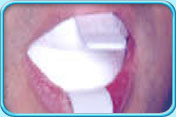
In the dental clinic, the dentist can use a strong light to catalyse the more concentrated bleaching agents to whiten teeth in a shorter time.
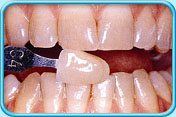 Before bleaching
Before bleaching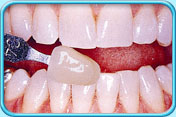 After bleaching
After bleachingTreatment duration: 3 to 6 months.
Visit dentist periodically to check the progress of bleaching, and change the cotton pellet with whitening agent accordingly. When whitening effect is achieved, remove the cotton pellet, clean the pulp chamber and filled up the tooth cavity.
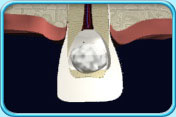
Duration: The treatment ends when the stains or colours are lightened, which takes approximately 1 - 3 months.